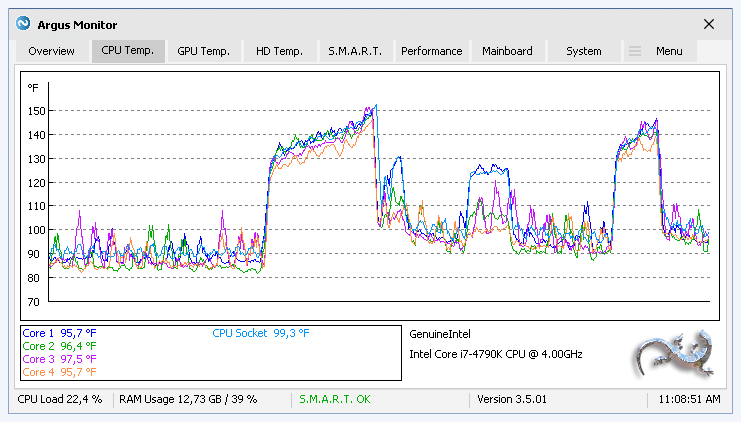

Higher ambient temperatures can make it harder for cooling systems to dissipate heat effectively, resulting in increased component temperatures.ģ. Ambient Temperature: The temperature of the environment in which your computer operates can affect the cooling efficiency of your CPU and GPU. Running demanding applications or engaging in resource-intensive activities like gaming or video editing will generally push these components to higher temperatures.Ģ. Processor Usage: The workload and intensity of tasks being processed by your CPU and GPU directly impact their temperatures. Here are some key factors that affect CPU and GPU temperatures:ġ. Understanding these factors can help you identify potential issues and take appropriate measures to maintain optimal temperatures. Several factors can influence the temperatures of your CPU and GPU. If you consistently observe temperatures approaching or exceeding the upper limits of the recommended range, it may be a sign that you need to improve your cooling system or adjust your fan settings.īy adhering to the recommended temperature ranges and taking appropriate cooling measures, you can ensure the longevity and optimal performance of your CPU and GPU, allowing you to make the most of your computing experience.įactors That Affect CPU and GPU Temperatures Regularly monitoring your CPU and GPU temperatures will give you a good idea of their average operating range. Operating below the lower end of the temperature range can lead to decreased performance, while going beyond the upper limits can result in thermal throttling, where the components automatically reduce their speed to prevent overheating. Maintaining temperatures within the optimal range ensures that your components operate efficiently without excessive heat-induced strain. Additionally, different cooling solutions and fan configurations can impact the actual temperatures achieved. It’s important to note that these temperature ranges are general guidelines, and it’s always advisable to refer to your specific CPU and GPU manufacturer’s recommendations. However, some high-performance graphics cards can tolerate temperatures up to 90☌ without any significant issues. Idle temperatures are typically lower, around 30☌ to 40☌, while under heavy load, such as during gaming or video rendering, the temperatures can reach up to 80☌ or even slightly higher, depending on the processor’s capabilities.Īs for GPUs, the optimal temperature range is also similar, with idle temperatures ranging from 30☌ to 40☌, and under load, they can reach up to 80☌ or slightly above. While specific temperature ranges can vary between different models and manufacturers, there are general guidelines to help ensure that your components operate within safe limits.įor CPUs, the optimal temperature range typically falls between 40☌ and 70☌. Understanding the optimal temperature range for CPUs and GPUs is essential for maintaining their performance and preventing potential issues. What Is the Optimal Temperature Range for CPUs and GPUs? By keeping these vital components cool, you can ensure that your computer runs smoothly and efficiently, whether you’re working on intensive tasks or enjoying the latest games. Ultimately, monitoring your CPU and GPU temperatures is not only about maximizing your system’s performance but also about protecting your investment.


 0 kommentar(er)
0 kommentar(er)
